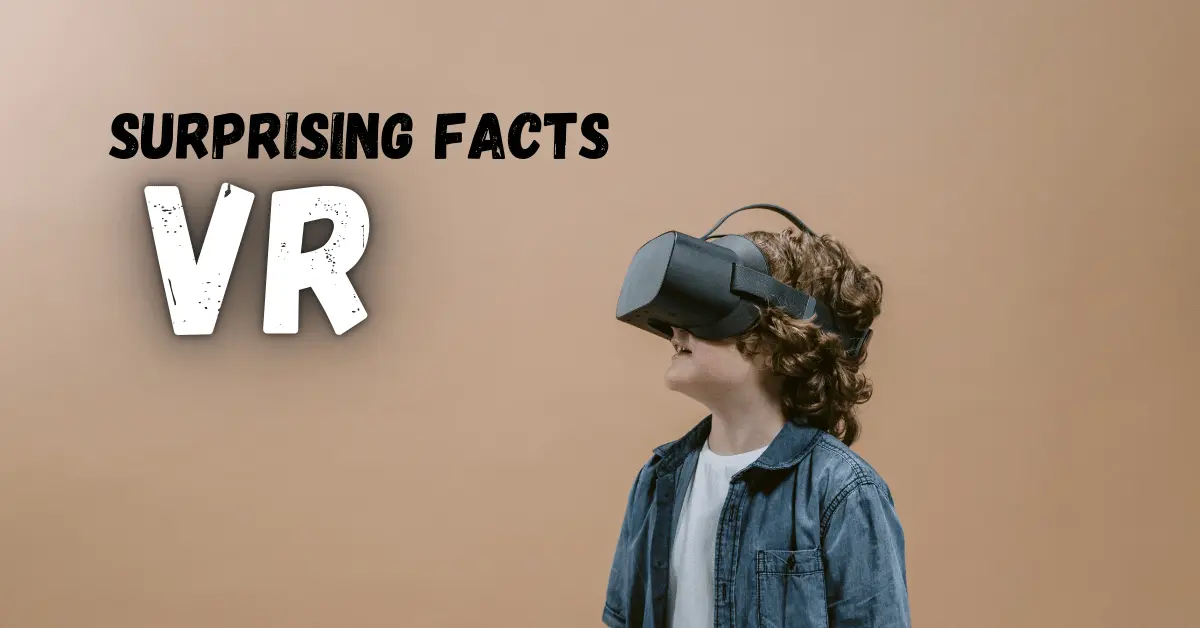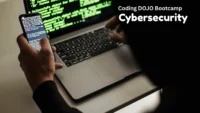12 Surprising VR Facts 2025
Published: 5 Apr 2025

Virtual reality (VR) has transformed the way we interact with technology, offering innovative solutions across industries and appealing to diverse audiences. This article highlights surprising aspects of VR, showcasing its versatility, impact, and widespread applications.
1. Audience Diversity in VR
Virtual reality (VR) has transcended generational boundaries, appealing to a wide and varied audience that includes not only Gen Z and Millennials but also Baby Boomers. While younger generations often explore VR for gaming, social interactions, and immersive entertainment, Baby Boomers are increasingly drawn to its practical applications.
For example, Baby Boomers use VR to engage in virtual travel experiences, take part in educational programs, and even maintain connections with loved ones through interactive simulations. This growing interest reflects the adaptability of VR technology to meet the unique preferences and needs of different age groups, emphasizing its broad appeal and inclusivity.
2. Corporate Investment in VR
Leading global brands, including those recognized as Forbes’ most valuable companies, are heavily investing in virtual reality (VR). These corporations are utilizing VR technology to transform customer experiences, improve efficiency, and remain competitive in evolving markets.
Examples include virtual shopping environments, design simulations in manufacturing, and enhanced medical training through immersive applications. This widespread corporate interest underscores VR’s significant role in driving innovation and redefining industry standards.
3. Cost Accessibility in VR
The cost of VR production spans a wide range, making it accessible for projects with varying budgets. High-end VR experiences, such as detailed simulations or large-scale interactive environments, can involve significant investment. However, simpler VR applications, like 360-degree videos or basic virtual tours, are relatively affordable and provide substantial value within budget-friendly constraints.
This flexibility in costs enables businesses and creators to tailor VR projects to their specific needs and resources, making the technology viable for startups and enterprises alike. The scalability of VR production is a key factor in its growing adoption across diverse industries.
4. Origin of the Term “Virtual Reality”
The term “virtual reality” was first coined in 1987 by Jaron Lanier, a computer scientist and pioneer in the field of VR technology. Lanier’s work and innovations laid the foundation for the immersive experiences that define VR today. His vision helped establish the terminology and conceptual framework that continue to shape virtual reality as an industry and technological phenomenon.
5. Enhancing Real-Life Experiences with VR
Virtual reality (VR) serves as a powerful tool to complement and enrich real-life experiences. In industries such as travel, VR enables users to explore destinations virtually before embarking on physical journeys. Travelers can immerse themselves in virtual tours, discover landmarks, and familiarize themselves with cultural aspects, fostering excitement and informed decision-making.
Beyond travel, VR enhances real-life scenarios across fields like education, healthcare, and training. It provides opportunities to experience environments or scenarios that might otherwise be inaccessible, ensuring a seamless blend of virtual immersion and practical application. This synergy between VR and real-world experiences underscores its transformative potential.
6. Non-Gaming Applications of VR
Virtual reality (VR) has expanded far beyond its roots in gaming, finding applications in various industries and activities. In travel, VR offers immersive virtual tours, allowing users to explore destinations, hotels, and landmarks before visiting in person. Documentaries leverage VR to place viewers directly within stories, creating deeply engaging and emotional experiences.
Other non-gaming uses include education, where VR simulates complex environments for hands-on learning, and healthcare, where it assists in therapy, rehabilitation, and surgical training. These diverse applications underscore VR’s versatility as a tool for storytelling, learning, and innovation.
7. Google Cardboard: A Creative Side Project
Google Cardboard, a simple and affordable virtual reality (VR) viewer, originated as a side project by a group of Google engineers. Launched in 2014, it was designed to make VR accessible to a wider audience by turning everyday smartphones into VR devices. Made from low-cost materials like cardboard, lenses, and a rubber band, this innovative creation introduced millions to the possibilities of VR without requiring expensive equipment.
Google Cardboard marked a significant milestone in democratizing VR, sparking interest in immersive experiences across diverse user bases.
8. ROI from VR Applications
Virtual reality (VR) has demonstrated significant returns on investment (ROI) across various sectors. For instance, VR campaigns in the tourism industry have led to increased bookings by offering immersive previews of destinations, allowing potential travelers to explore accommodations and attractions virtually. Similarly, nonprofits have used VR experiences to evoke empathy and drive charity donations. By immersing viewers in the challenges faced by those in need, VR campaigns have proven to be highly effective in boosting contributions.
These examples highlight VR’s ability to deliver measurable outcomes, making it a valuable tool for achieving business and social impact goals.
9. Healthcare Applications of VR
Virtual reality (VR) has emerged as a transformative tool in the healthcare industry, offering innovative solutions in diagnostics, surgical planning, and therapeutic treatments. For diagnostics, VR allows medical professionals to visualize complex anatomical structures in three dimensions, aiding in the identification and understanding of conditions.
In surgical planning, VR simulations enable surgeons to rehearse procedures in a risk-free virtual environment, improving precision and outcomes. Therapeutically, VR is being used to treat conditions such as chronic pain, PTSD, and phobias through immersive exposure therapy and distraction techniques. These applications demonstrate VR’s growing potential to enhance medical practices and improve patient care.
10. U.S. Government’s Use of VR
The U.S. government has adopted virtual reality (VR) as a critical tool in fields such as aerospace and defense. NASA employs VR for astronaut training, simulating spacewalks, and mission rehearsals, allowing astronauts to experience and prepare for the challenges of space in a controlled environment.
Similarly, the military utilizes VR for combat training, engineering simulations, and strategic planning. Soldiers can engage in lifelike scenarios that enhance decision-making and situational awareness without real-world risks. These applications showcase the government’s commitment to leveraging VR technology for innovation, safety, and operational efficiency.
11. VR in the Travel Industry
Leading hospitality companies like Marriott and Hilton are leveraging virtual reality (VR) to inspire travel and boost bookings. Through VR, these brands allow potential customers to virtually explore hotel rooms, facilities, and destinations. This immersive experience enables travelers to envision their stay, fostering confidence in their decisions and enhancing the booking process.
By showcasing destinations in an engaging and interactive way, VR is revolutionizing the way travelers plan their trips, making it a valuable marketing tool for the travel and hospitality sector.
12. Collaborative Growth of VR Technology
The development and expansion of virtual reality (VR) technology have been shaped by the efforts of numerous innovators across different fields. From early hardware pioneers to software developers and visionary designers, each has played a critical role in advancing VR’s capabilities.
Contributions have ranged from engineering immersive headsets to creating sophisticated applications for gaming, education, and beyond. This collaborative innovation has allowed VR to evolve into a versatile and impactful technology, influencing industries and enriching user experiences worldwide.
Conclusion
From enhancing real-life experiences to driving corporate innovation, VR continues to redefine possibilities. Its adaptability and contributions across fields underline its role as a transformative technology, shaping the future of how we work, learn, and connect.
Consider the purpose (gaming, education, travel), compatibility with devices, and your budget. Research features like resolution, tracking, and comfort.
Motion sickness occurs when there’s a mismatch between visual and physical movement cues. Choosing VR experiences with smoother visuals and proper settings can help reduce discomfort.
Take regular breaks, adjust headset fit for comfort, and ensure your play area is free of obstacles to avoid fatigue or accidents.
A quality headset, motion controllers, and a powerful computer or console are essential. Additional components, like sensors, can enhance immersion.
When used responsibly, VR is generally safe. Limiting session durations and ensuring proper headset adjustment can prevent eye strain and discomfort.
Start with affordable options like Google Cardboard or basic 360-degree content creation. Focus on targeted use cases such as virtual tours or training programs.
Factors include high-resolution displays, realistic audio, precise motion tracking, and interactive elements that respond to user inputs.
Yes, many VR setups are designed for use in small spaces. Ensure there is enough room to move safely within the virtual environment.
Data security varies by platform. Opt for trusted providers, review privacy settings, and be cautious about sharing personal information in VR.
Improving affordability, simplifying hardware setup, and increasing practical applications (e.g., education, telemedicine) can make VR more appealing to diverse users.

- Be Respectful
- Stay Relevant
- Stay Positive
- True Feedback
- Encourage Discussion
- Avoid Spamming
- No Fake News
- Don't Copy-Paste
- No Personal Attacks

- Be Respectful
- Stay Relevant
- Stay Positive
- True Feedback
- Encourage Discussion
- Avoid Spamming
- No Fake News
- Don't Copy-Paste
- No Personal Attacks

![6 Types Of Virtual Reality | Perfect VR Information [2025] - Post Thumbnail](https://techpuk.com/wp-content/uploads/vr-types-100x52.webp)



